
NERD Summit - March 18, 2023
Michael Lynch (mtlynch.io)
Improve code reviews as the author
- You’re half of the review
- You have a significant impact on the outcome
- Too few developers think about it
Goal
- Become so good at code reviews that…
Your code reviewer will fall in love with you
LiterallyBut I don’t want my reviewer to fall in love with me
They’re going to fall in love with you
Deal with it
Why improve your code reviews?
- Helps
- Your reviewer
- Your team
- You
Learn faster
- Directs your reviewer’s attention to important areas
- Elicits more constructive feedback from your reviewer
Make others better
- Sets an example for your colleagues
- Makes your job easier when they send code to you
Minimize team conflicts
- Code reviews a common source of friction
- Conscientious approach minimizes arguments
What is a code review?
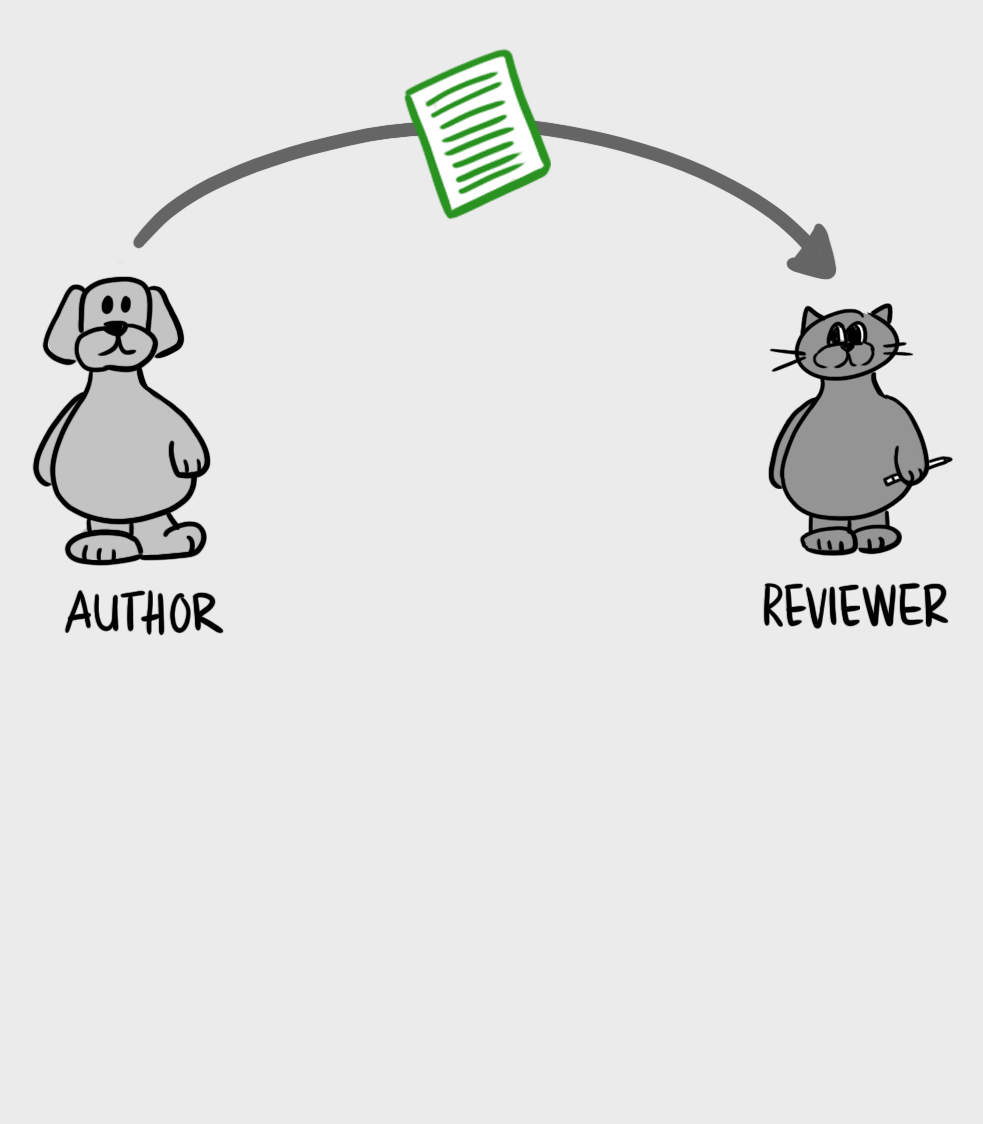
- Consists of author and reviewer
- Author sends a changelist to reviewer
What is a code review?
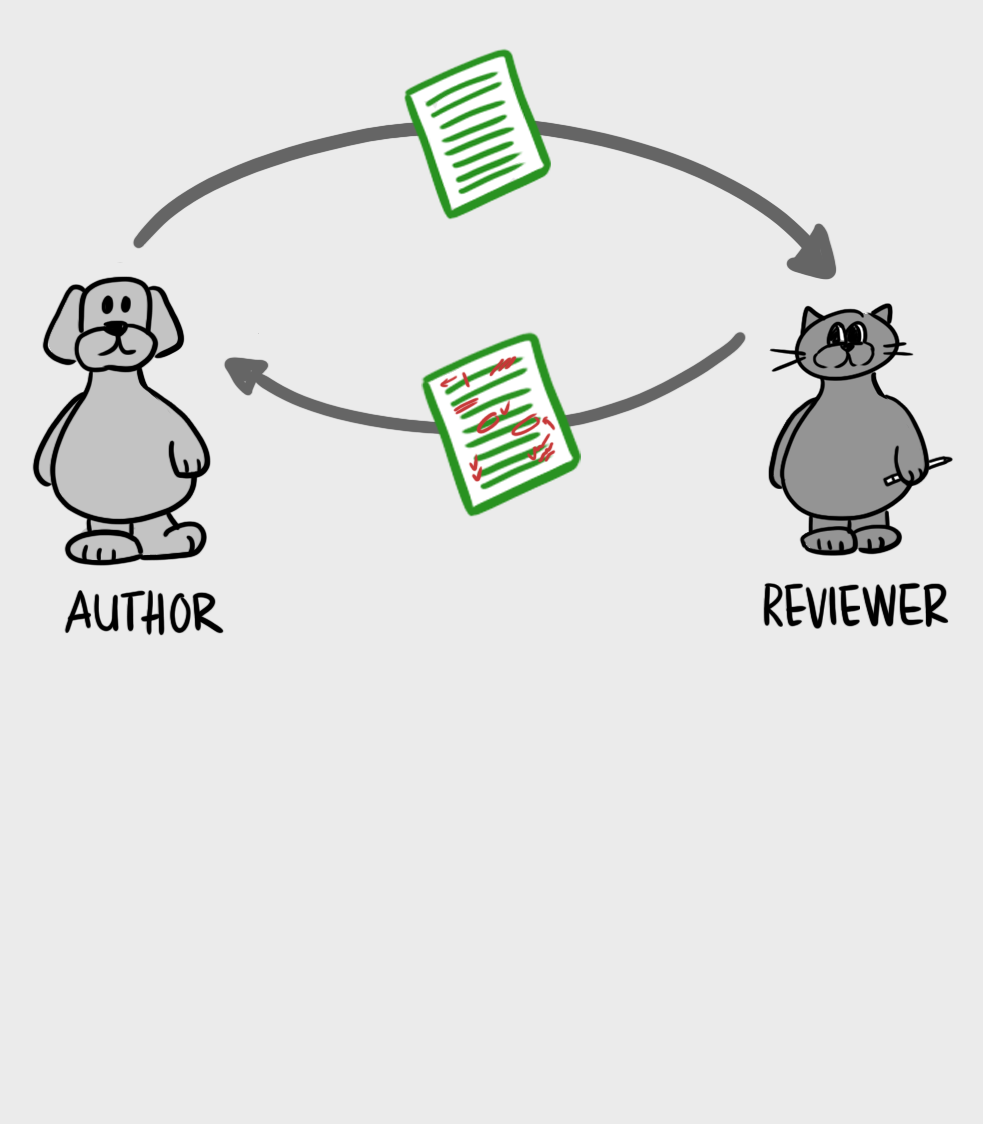
- Review happens in rounds
- Author sends changelist
- Reviewer gives feedback
What is a code review?

- Review ends when reviewer approves the changelist
The golden rule
Value your reviewer’s time
Value your reviewer’s time
- Easiest thing to do is a lazy review
- A quality review is a gift
- Reward them for putting in the time
- Developer time is a scarce resource
Review your own code first

Review your own code first
- Come back to the code with fresh eyes
- Review your code after taking a few hours away
- Put yourself in reviewer’s shoes
- Imagine you don’t have context as author
Review your own code first
- Use a diff view
- You’ll overlook changes in your editor
Review your own code first
- Your reviewer should not see:
- Debug code you forgot to delete
- Extra files you accidentally included
- Unresolved merge conflicts
Review your own code first
Which is easier?
- Reviewer identifies the bug
- Reviewer writes a note explaining the bug to you
- You read the note
- You find the relevant code
- You make the fix
- You send the revised code to reviewer
- Reviewer verifies the fix
Review your own code first
Which is easier?
- You identify the bug
- You fix the bug
Write a clear changelist description
- Everything the reviewer needs should be in the code or the description
Write a clear changelist description
- Other people might read it beyond the reviewer
- Teammates not on the review
- People from other teams
- You, in a year
Write a clear changelist description
- Explain the context around the change
- The why not the how
Write a clear changelist description
Example bad changelist description
Move user.js
This change moves user.js to the src/controllers/auth directory.
Write a clear changelist description
Example good changelist description
Move user.js to src/controllers/auth
When we created user.js, most of its callers lived in src/lib/user.
We did a lot of restructing as part of the 4.2.x release, so now all of user.js’s clients live in src/controllers/auth, so this change moves user.js to be closer to the majority of its clients.
Automate the easy stuff
- Review time is valuable
- Don’t use human reviewers to:
- Format code
- Identify style violations
- Identify build failures
Automate the easy stuff
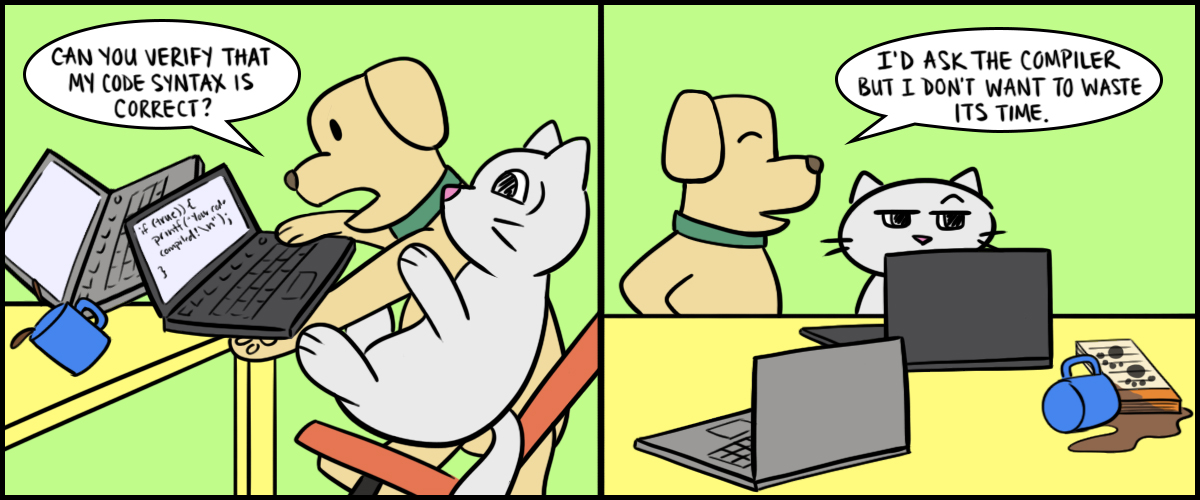
Automate the easy stuff
- Shift heavy lifting to computers with:
- Continuous integration (CI)
- git pre-commit hooks
- Integrate linters/formatters in your editor
Separate functional and non-functional changes
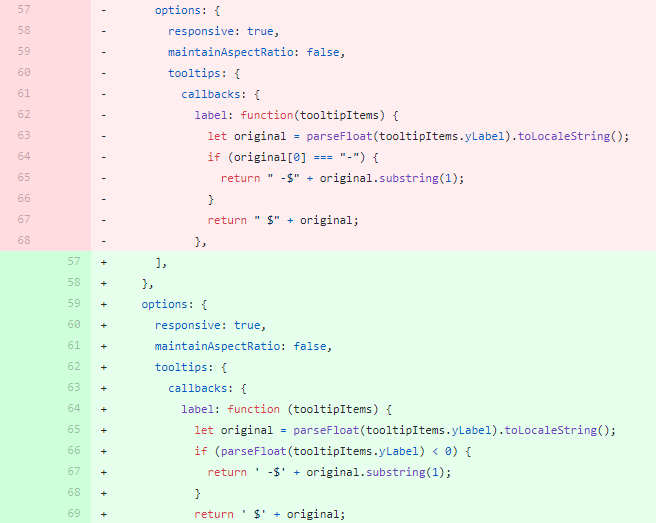
Separate functional and non-functional changes
- How it happens
- Author makes a small change
- Editor is configured to auto-format on change
- Author doesn’t notice / care
Separate functional and non-functional changes
| Changelist | Review difficulty |
|---|---|
| One-line change | Easy |
| Whitespace-only change | Easy |
| One-line functional change within 200 lines of whitespace changes | Painful |
Separate functional and non-functional changes
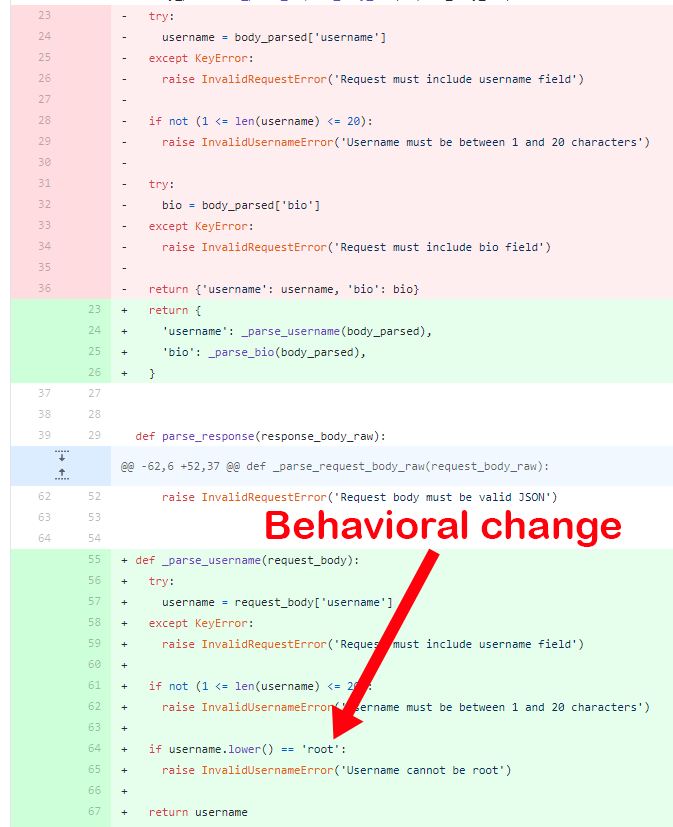
Communicate your responses explicitly
- Author sends changelist
- Reviewer gives notes
- Author pushes new commits
What happens next?
Communicate your responses explicitly

Communicate your responses explicitly

Answer questions with the code itself

Answer questions with the code itself
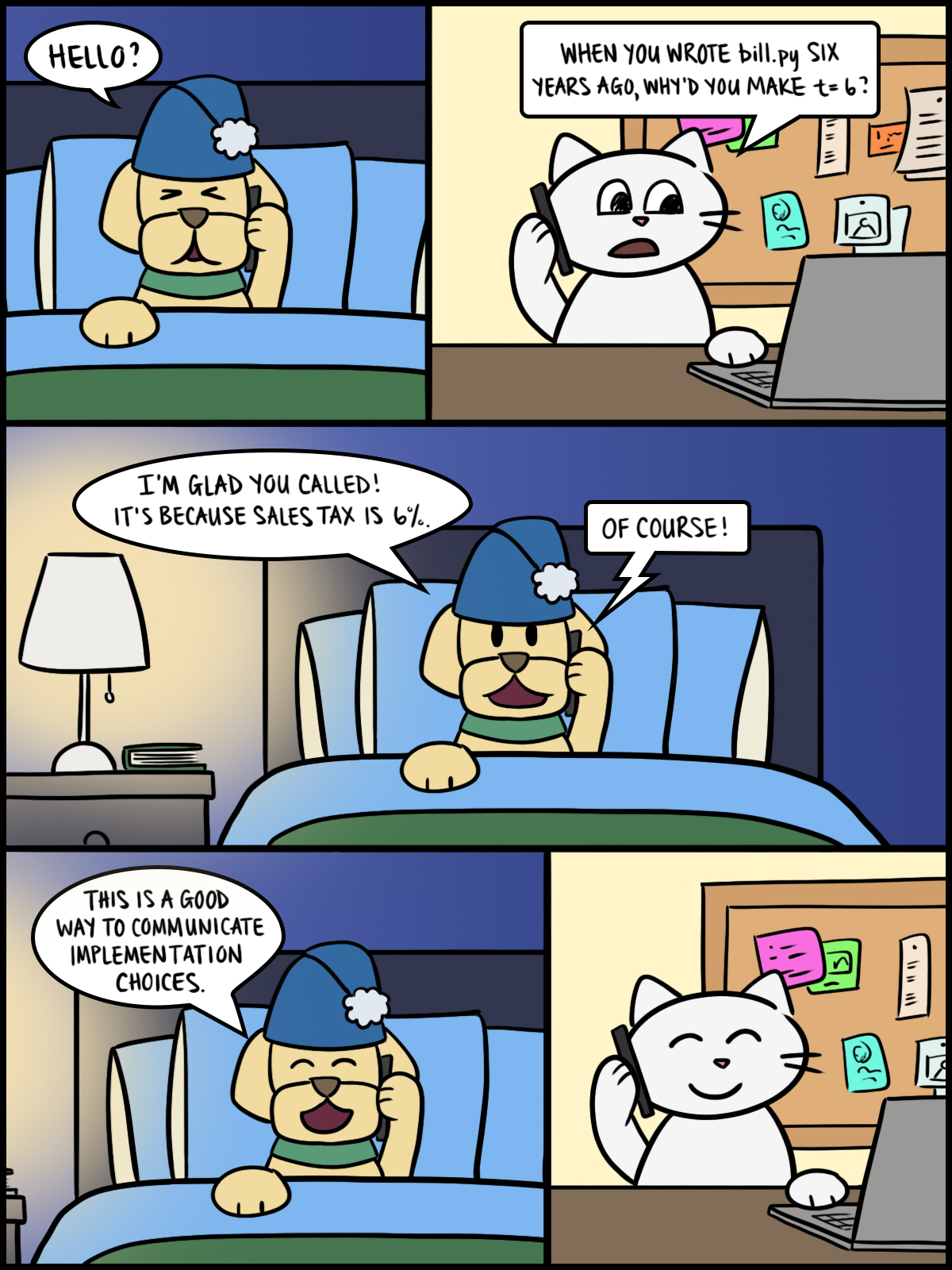
Answer questions with the code itself
- If your reviewer has this question, others will too
Answer questions with the code itself
- Prevent future readers from having the question
- Refactor code to improve clarity
- Add code comments for things you can’t express with naming/structure
Respond graciously to critiques
- It's about the code not about you
- Stay objective even if your reviewer is not
- Resist defensiveness
Respond graciously to critiques

Respond graciously to critiques
- Reviewer catching subtle mistakes is a good sign
- You’ve eliminated the easy stuff
Be patient when your reviewer is wrong
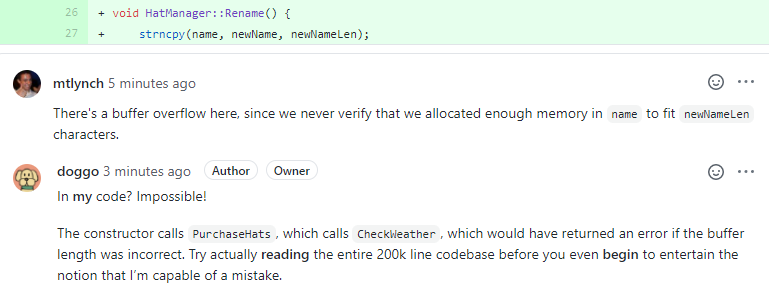
Be patient when your reviewer is wrong
- A misunderstand of the code: still a red flag
Be patient when your reviewer is wrong
There are two ways of constructing a software design. One way is to make it so simple that there are obviously no deficiencies. And the other way is to make it so complicated that there are no obvious deficiencies.
-Tony Hoare
Be patient when your reviewer is wrong
- Can you prevent future readers from misunderstanding?
- Refactor the code
- Add comments to clarify behavior
- Add tests
Artfully solicit missing information
Reviewer: This function is confusing.
Artfully solicit missing information
Example bad response (defensive)
Reviewer: This function is confusing.
Author: What, exactly, is confusing about it?
Artfully solicit missing information
Example good response (agreeable)
Reviewer: This function is confusing.
Author: What changes would be helpful?
Artfully solicit missing information
- Take a stab at it
- Find something to improve about your code
Award all ties to your reviewer

Award all ties to your reviewer
Reviewer: I think this 8-line function would be better as two 5-line functions.
Author: I think it’s clearer as a single function.
Who’s right?
Award all ties to your reviewer
- Reviewer has better perspective reading the code fresh
- If both participants have equal evidence, defer to reviewer
Review
- Review your own code first
- Write a clear changelist description
- Automate the easy stuff
- Separate functional and non-functional changes
- Communicate your responses explicitly
- Answer questions with the code itself
- Respond graciously to critiques
- Be patient when your reviewer is wrong
- Artfully solicit missing information
- Award all ties to your reviewer
The golden rule
Value your reviewer’s time
Thanks!
- Full blog post is at https://mtlynch.io/code-review-love/
- Or Google “code review love”
- Mastodon: michael@m.mtlynch.io
- Twitter: @deliberatecoder
- Co-host monthly Indie Founders meetup
- Email: michael@mtlynch.io
- Slides: https://decks.mtlynch.io/nerds-2023/